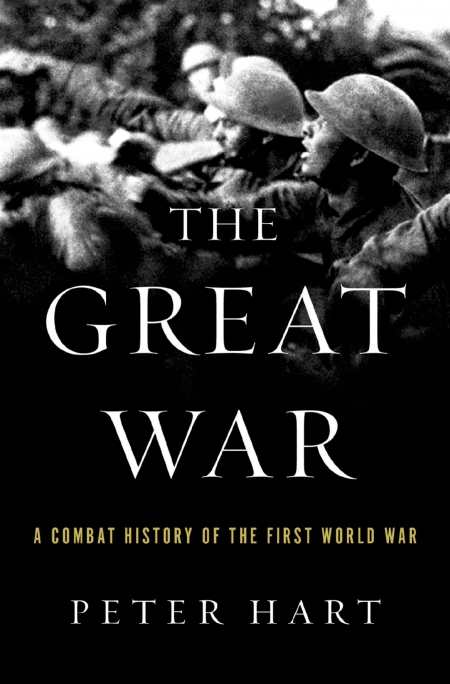
The Great War
A Combat History of the First World War
A skilled historian answers key questions about military strategy during the “war to end all wars.”
Peter Hart, Oral Historian of the Imperial War Museum in London, lays out his thesis in the first sentence of The Great War: A Combat History of the First World War: “The Great War was the single most important event of the twentieth century, shaping the world we live in today.” As countless other books have demonstrated, the global conflict of 1914 to 1918 permanently changed the international landscape. Empires were shattered, new killing technologies were introduced, and millions of combatants were slaughtered around the world. What sets this new book apart is the author’s detailed and comprehensive examination of the military engagements of this terrible conflagration.
Rather than delve into the political, cultural, or ideological underpinnings of the war, Hart focuses on what he calls the “whys and wherefores of the military conduct.” While describing specific battles in depth, he endeavors to answer several key questions: In this unprecedented struggle spanning thousands of miles on both land and sea, what problems did the generals and admirals face on each side? What did they know (or think they knew) at the time? Which tactics did they employ that advanced their cause, and which tactics contributed to their nations’ devastating defeat?
In a subject of this size, the scope of the narrative can be intimidating. But Hart, the author of many previous military histories (including The Somme: The Darkest Hour on the Western Front and Gallipoli) is up to the task. Drawing on a wealth of firsthand testimony (from high-ranking military leaders and soldiers on the front lines), he describes all of the most significant battles of World War I on both the Western and Eastern fronts, as well as the war at sea, the Middle East, and the Italian front.
By the end of 1914, the contours of the war, which so many believed would be over in six months, stretched out beyond anyone’s imagination: “The war was set on a grim path of attritional fighting, with all sides engaged in attempting to degrade the opposition forces to the level that they could no longer resist. With all sides able to draw on millions more men it was nigh on impossible to secure an easy victory.”
It is a credit to this skilled historian’s talents that he can tell the tale of this vast conflict in less than five hundred pages. Still, those readers who are relatively uninformed about World War I may find the level of detail too granular for their interests. Instead, The Great War is a perfect addition to the libraries of military buffs, especially those obsessed with the cataclysmic effects of “the war to end all wars.”
Reviewed by
Lee Polevoi
Disclosure: This article is not an endorsement, but a review. The publisher of this book provided free copies of the book to have their book reviewed by a professional reviewer. No fee was paid by the publisher for this review. Foreword Reviews only recommends books that we love. Foreword Magazine, Inc. is disclosing this in accordance with the Federal Trade Commission’s 16 CFR, Part 255.
